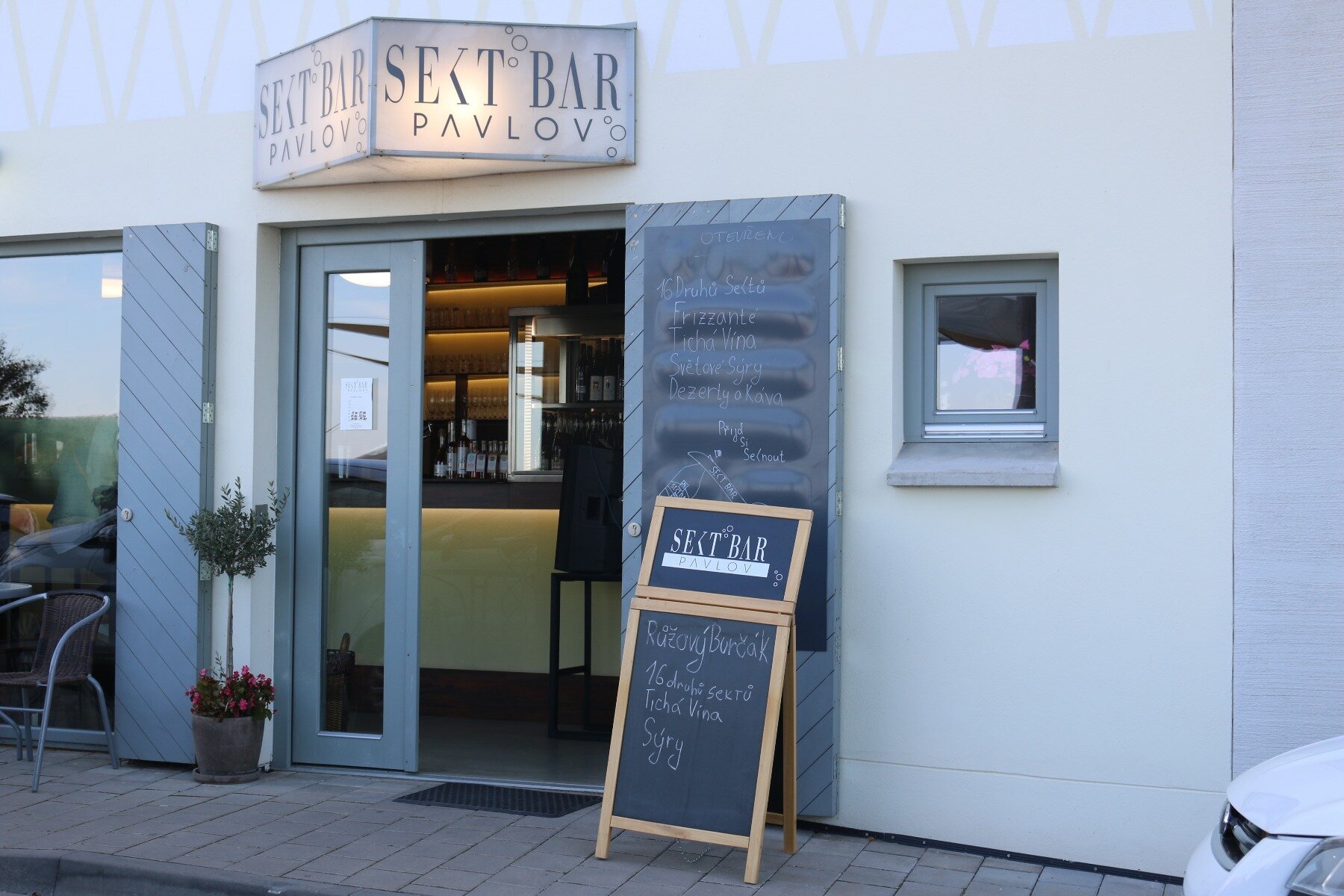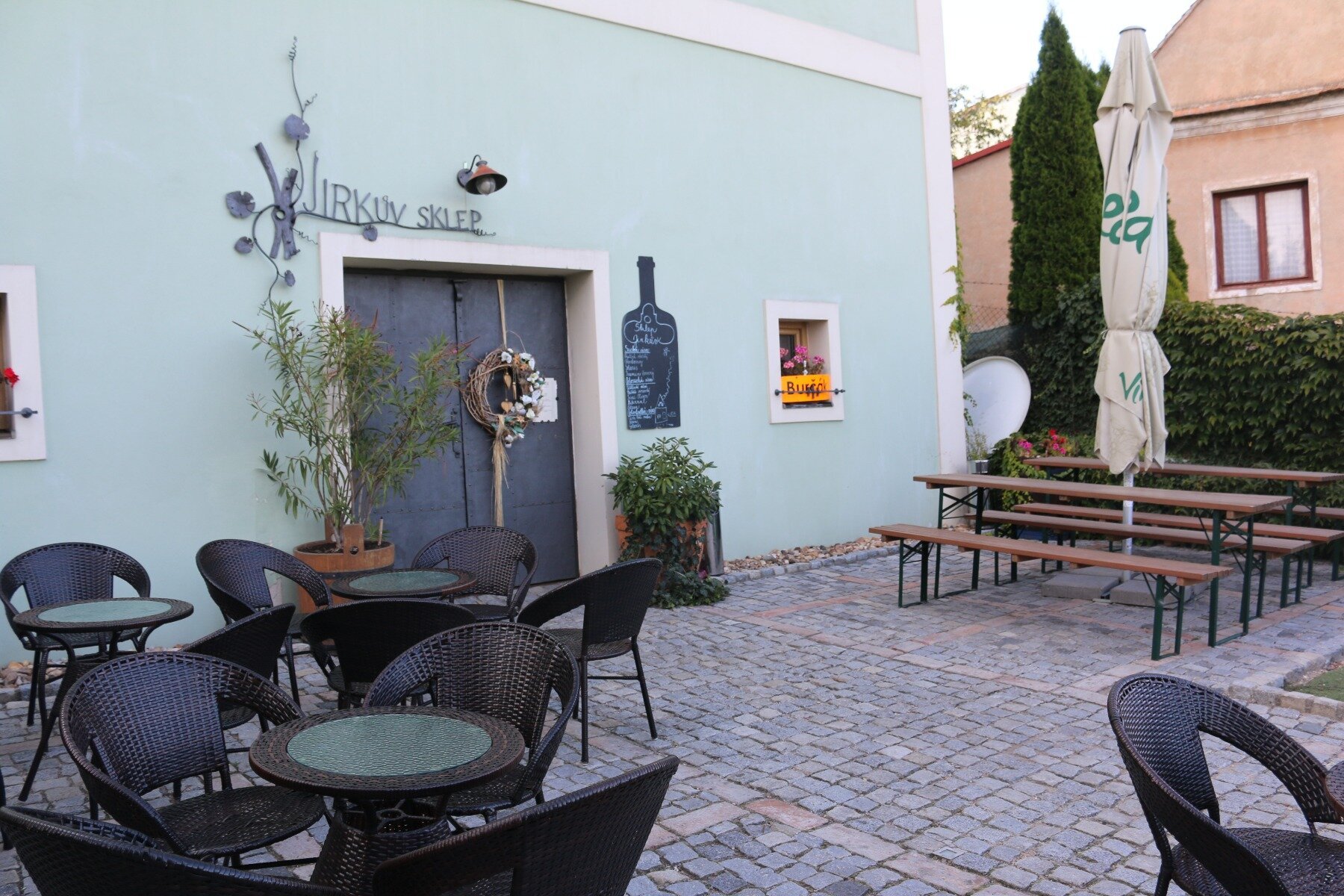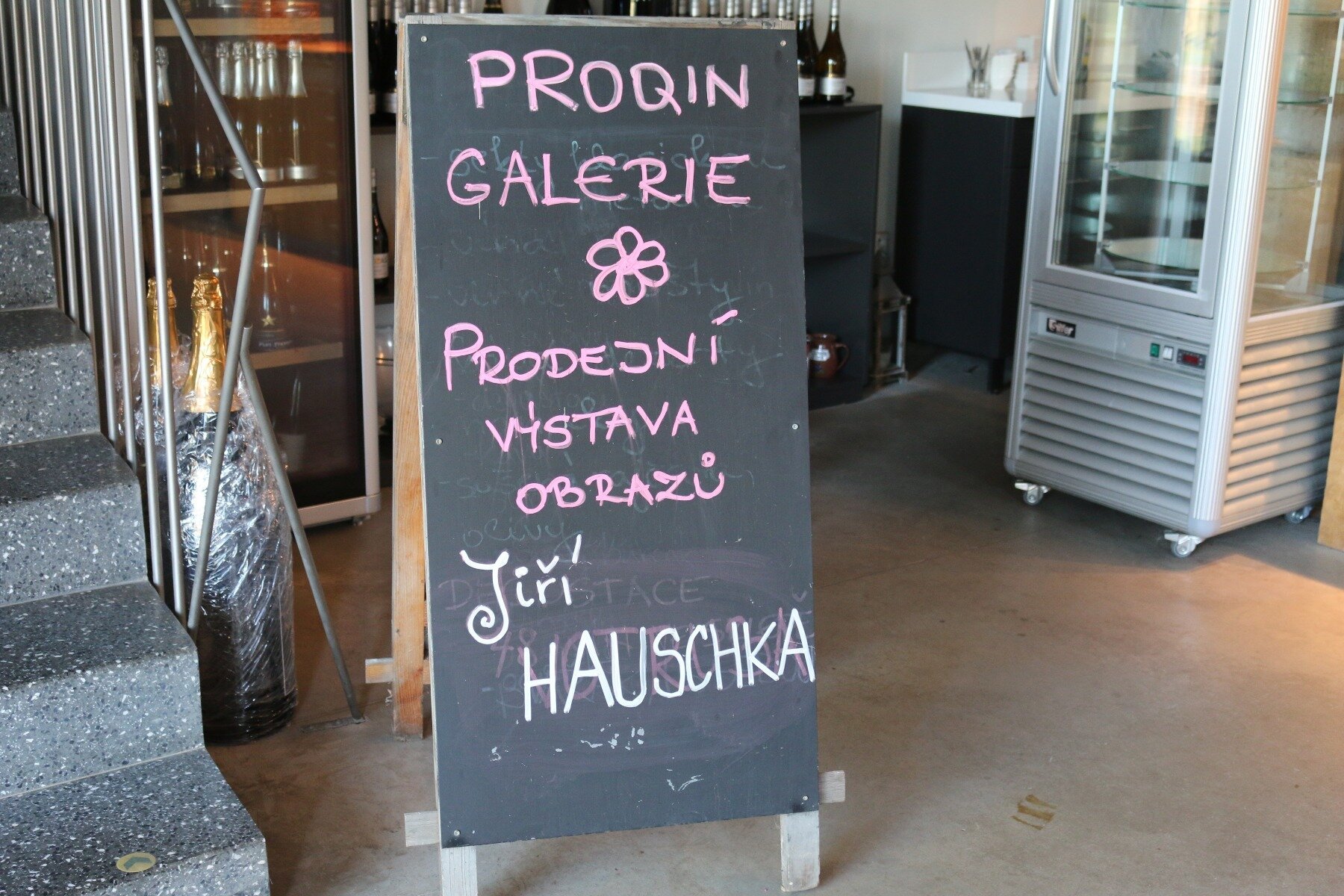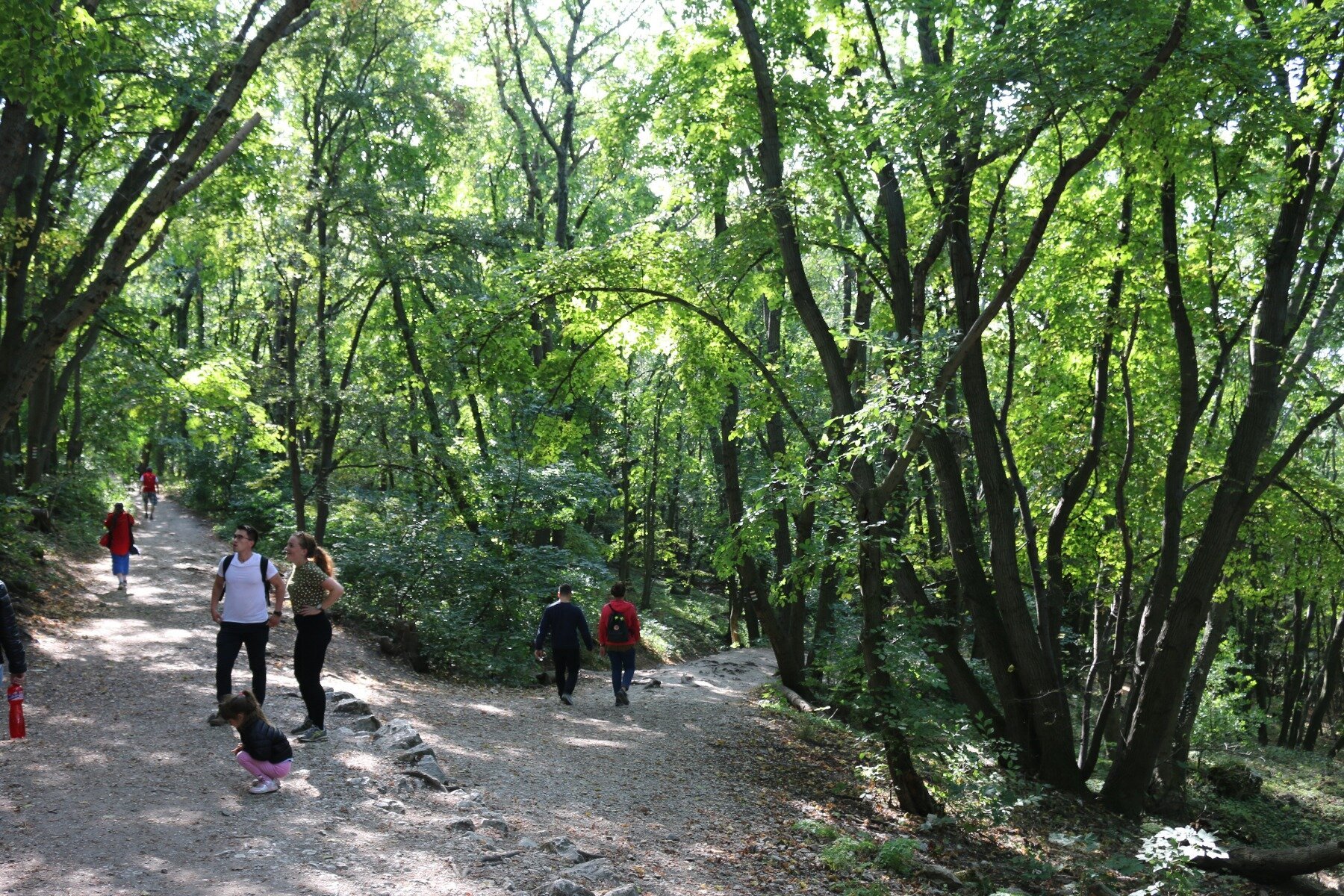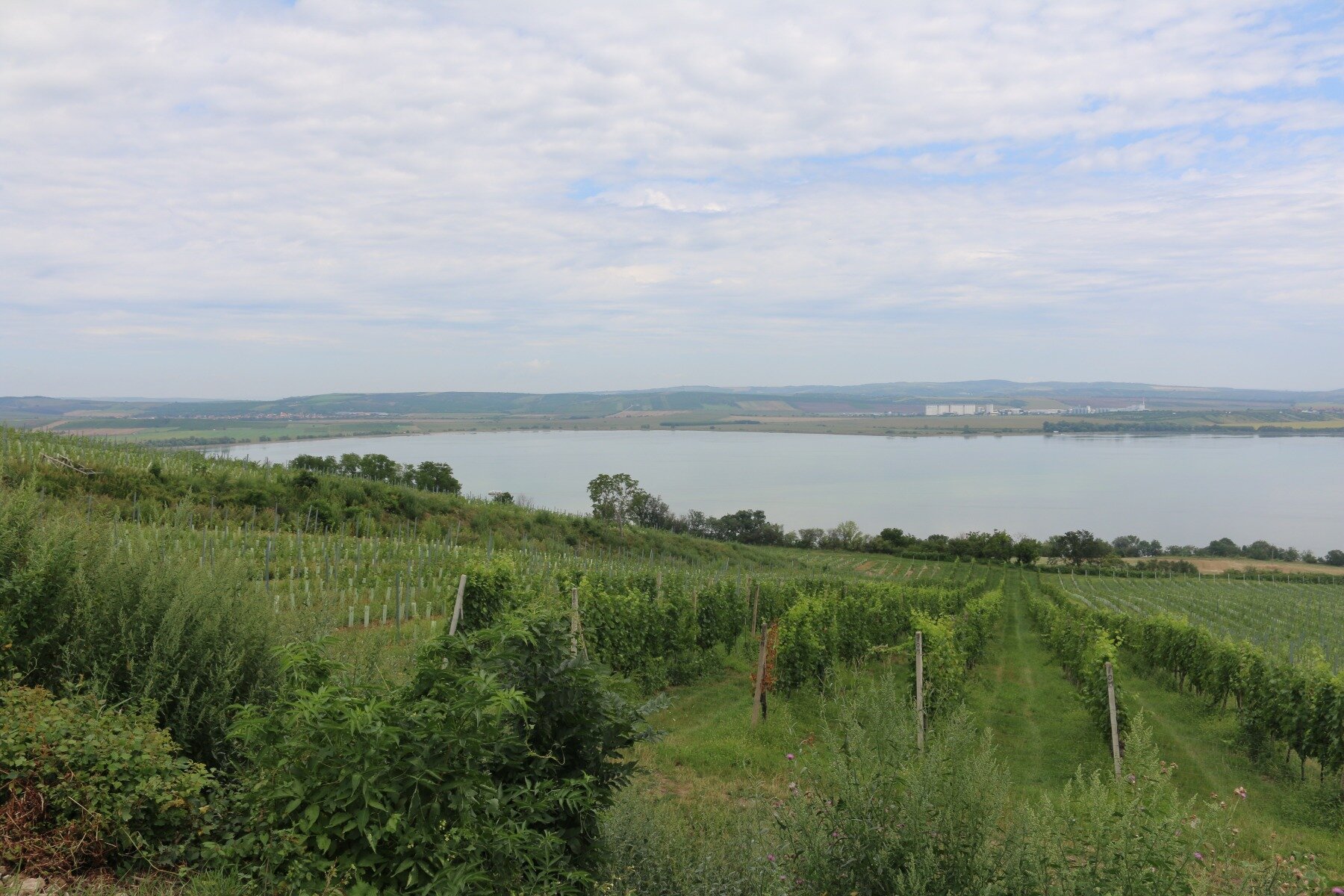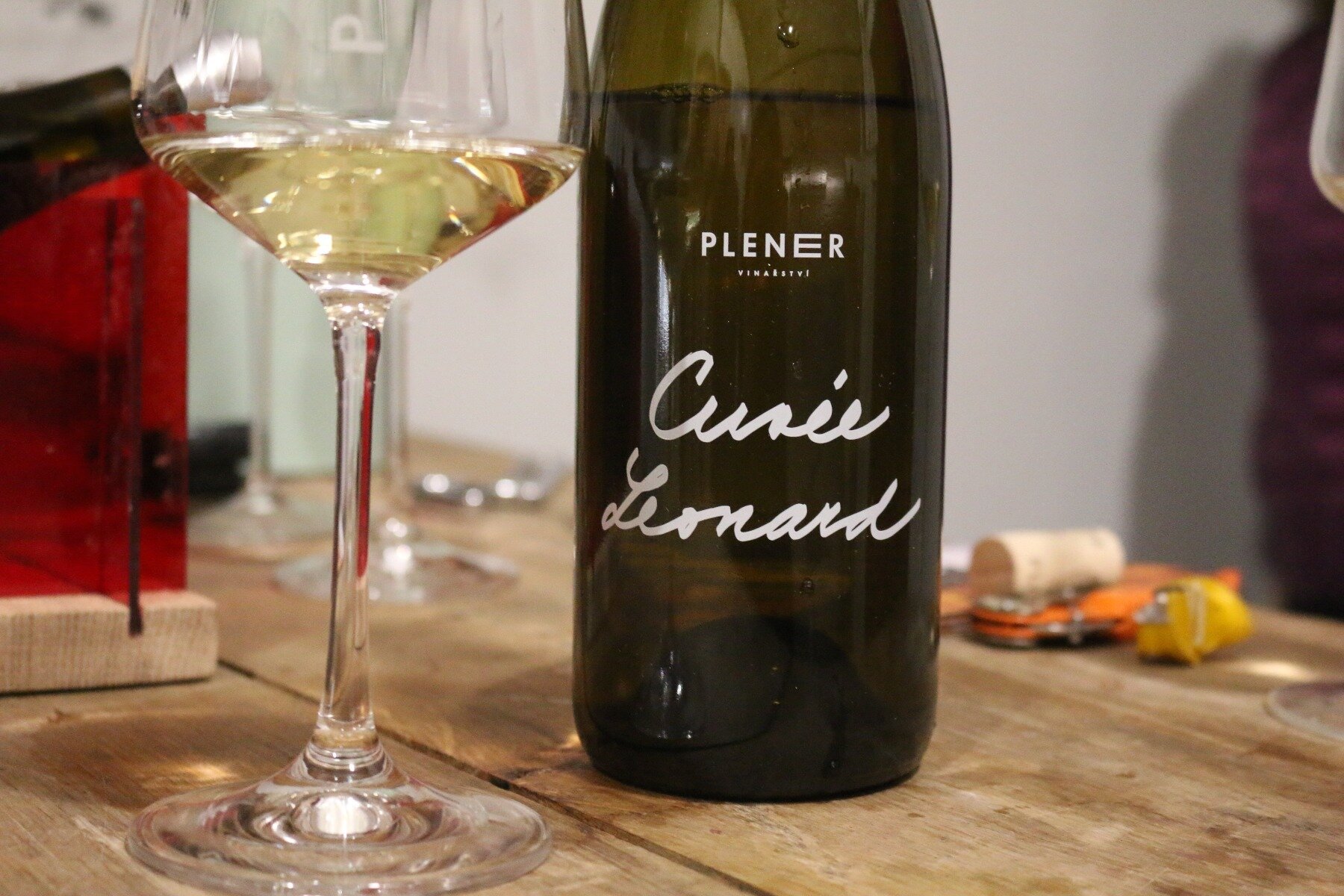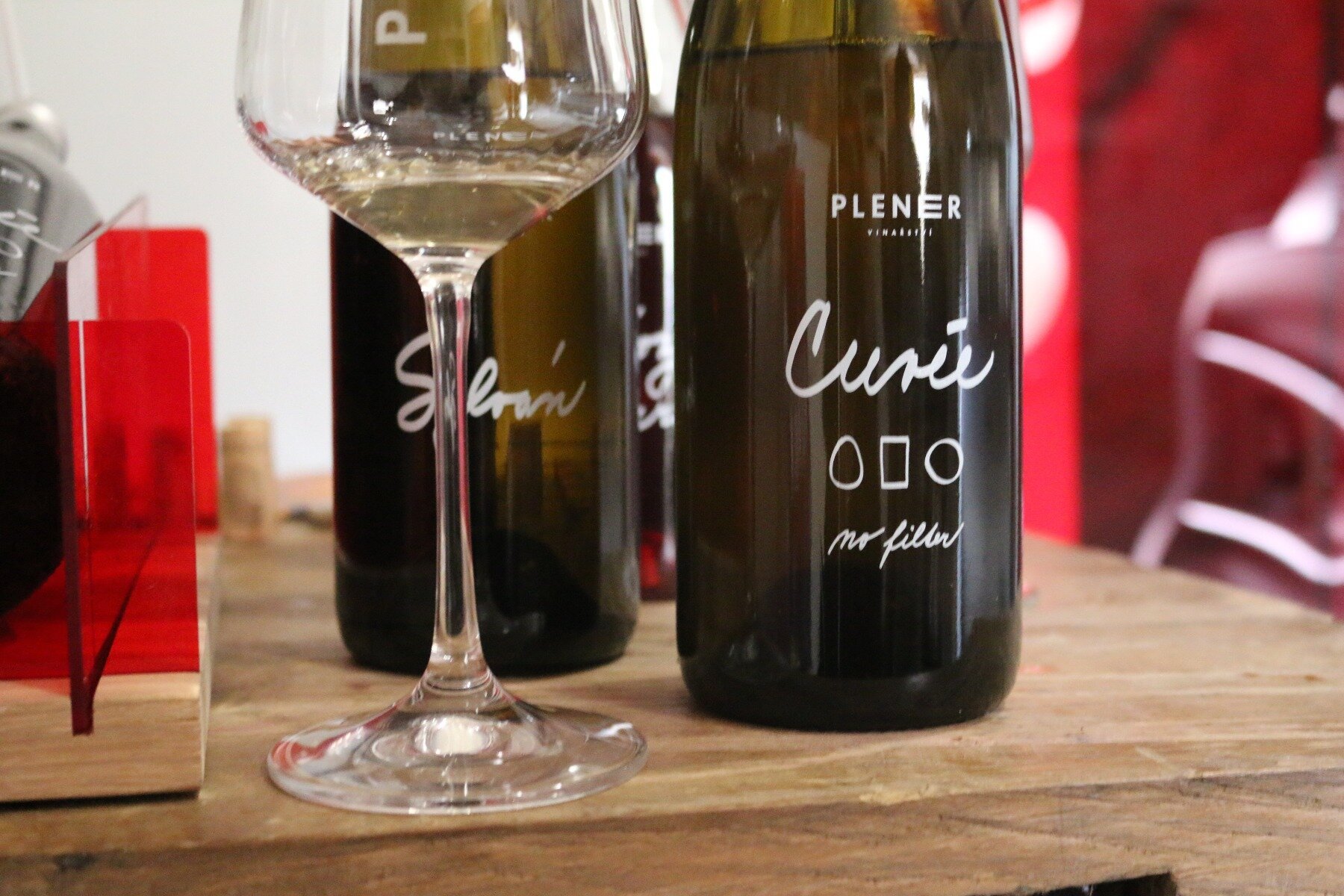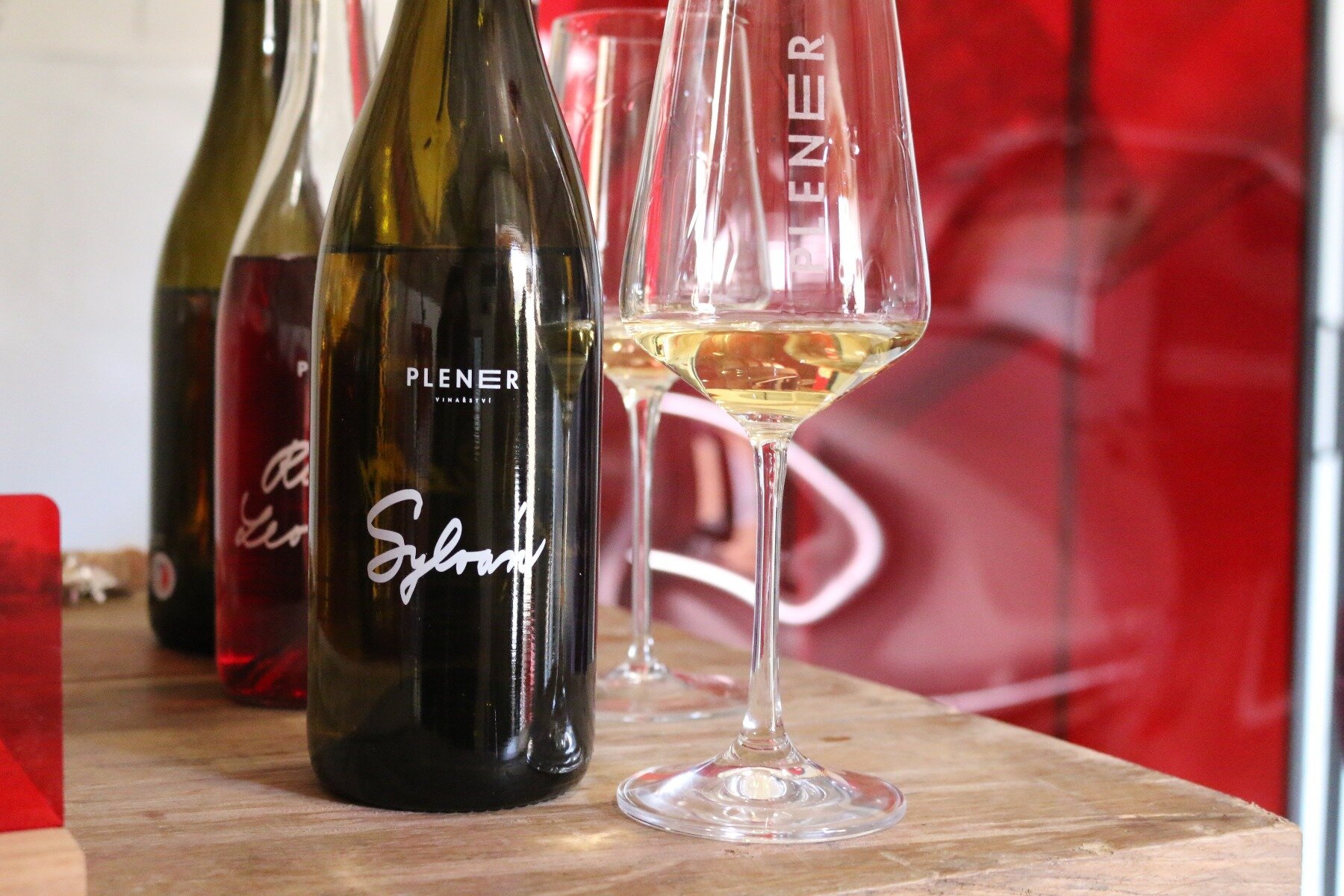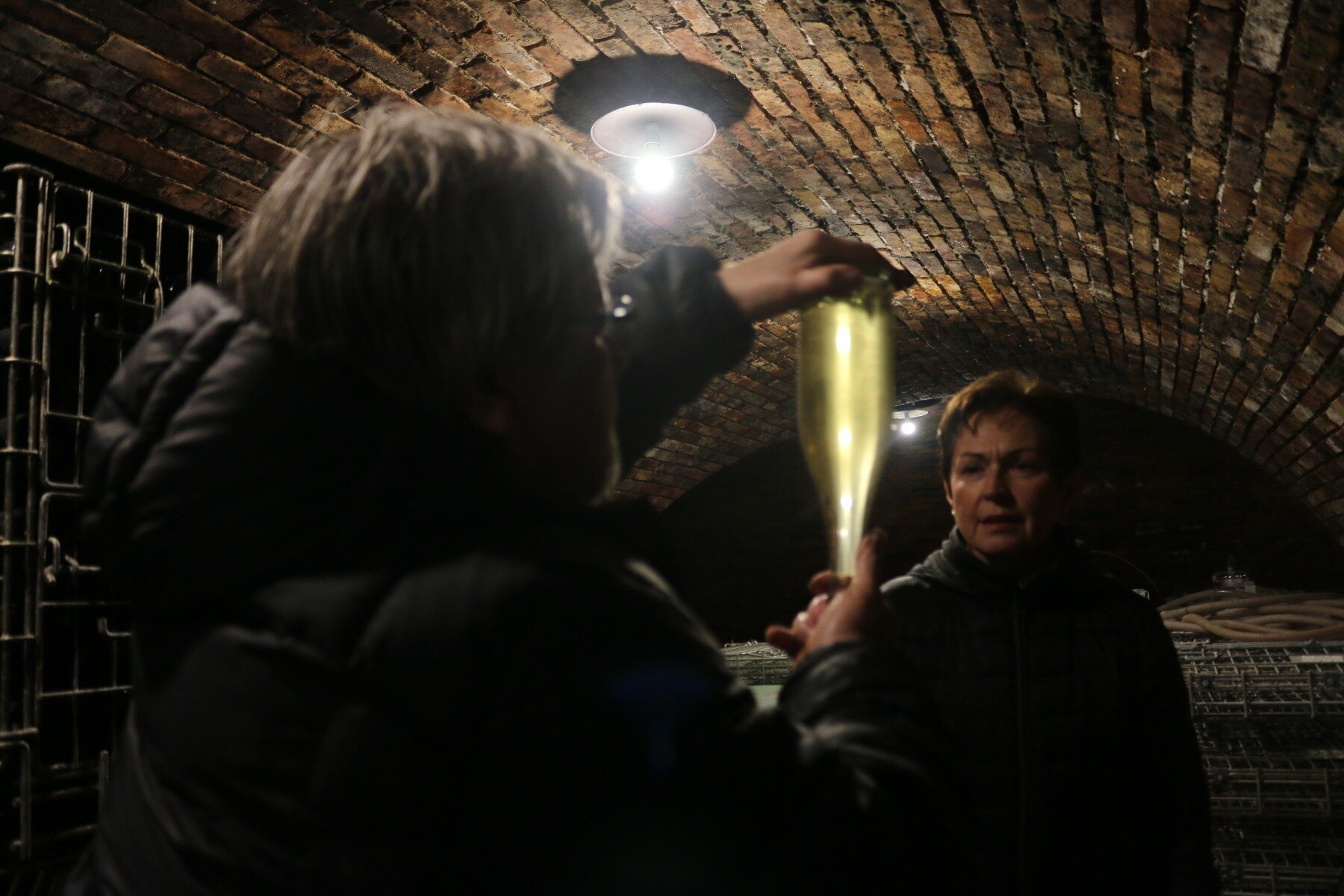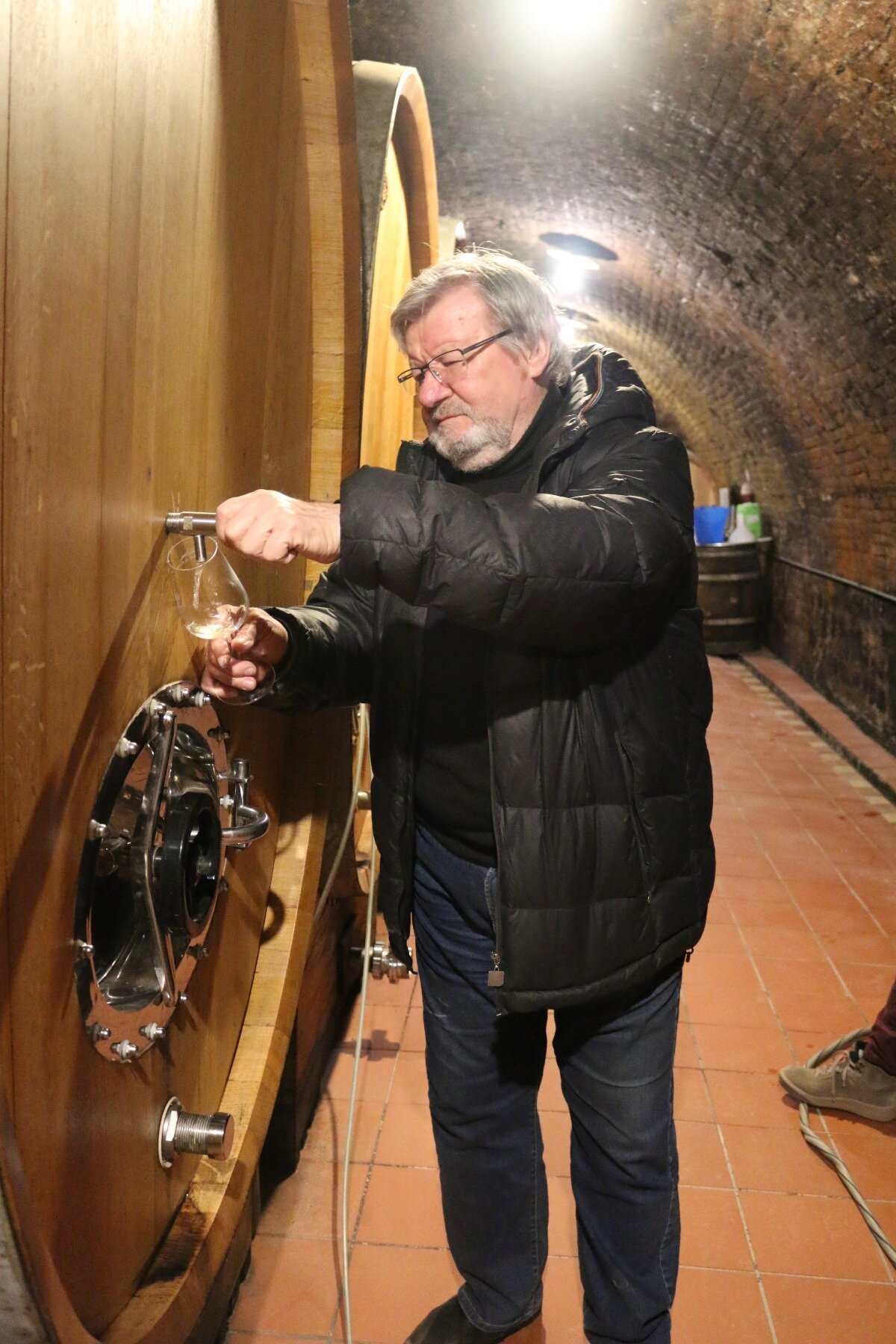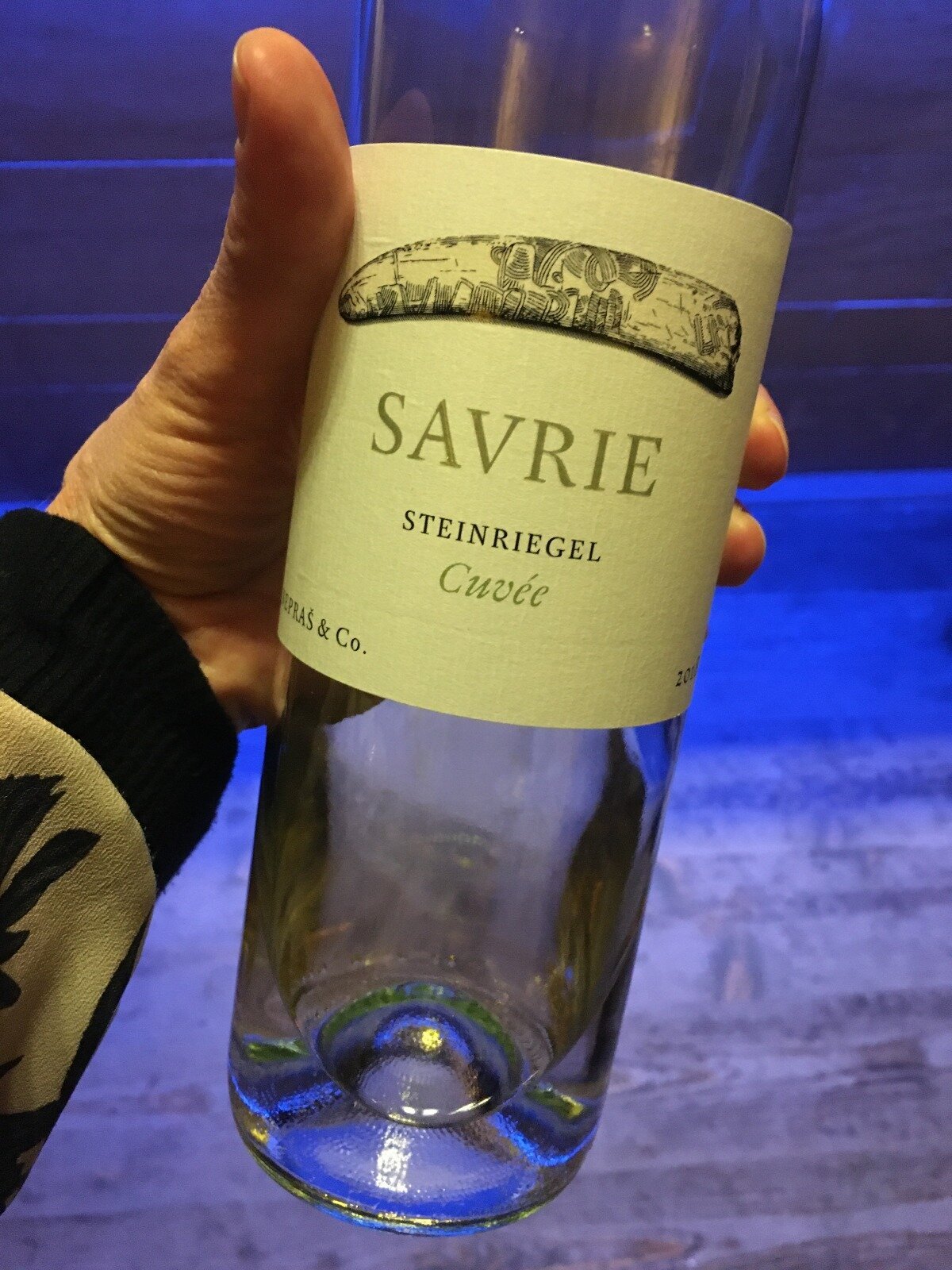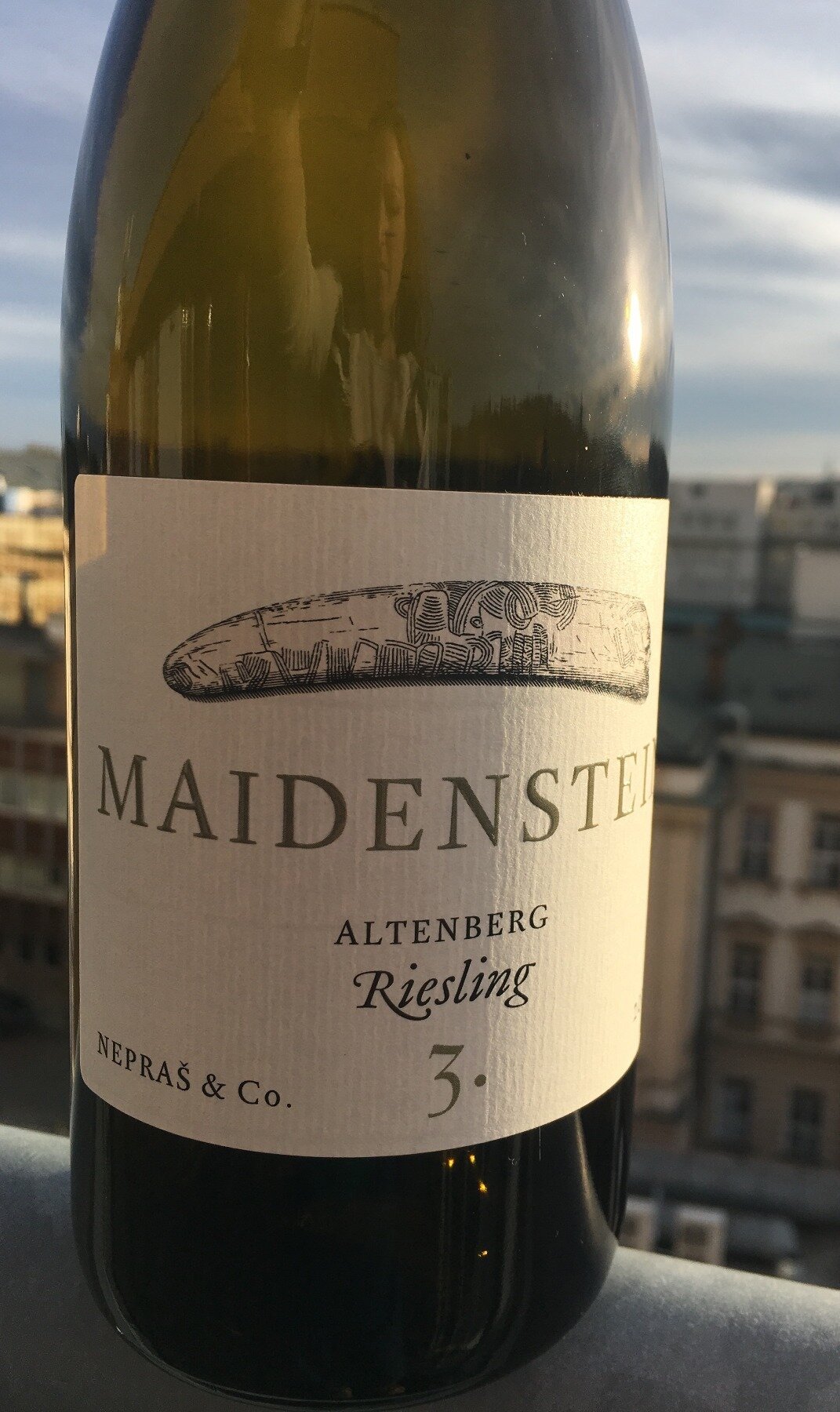Three Wineries You Should Know in Pavlov
In the market for high quality Moravian wine and don’t know where to look?
I’ve got your answer.
This post is dedicated to all the expats I have encountered here in Brno, who are seeking to discover the best wines South Moravia has to offer. Over the past year, I have spoken with dozens of international wine lovers at tastings, festivals, and meet-ups, and I realize that the Moravian wine struggle is real.
Foreigners here are desperate to try local wine, but are limited by language complexities and unfamiliarity with the native grapes, thus making the journey into Moravian wine a dubious path.
But I am here to simplify your wine life. Think of me as your Moravian wine consumer advocate. After all, there is no need for extra stress when selecting a delicious, regional wine.
One particular area that has recently captured my attention is Pavlov: A quaint, European village in the heart of South Moravia’s wine country.
With a population of under 600 people (!!!) Pavlov represents the best of small production, minimal intervention winemaking.
And although tiny in population, the village has quickly become a tourist hot spot, with modern cafés, restaurants and wine bars dotting the winding, hilly streets of the town.
Stepping foot into the underground stone cellars carved into the hillsides, you are offered a lovely respite from the high tech, modern world above.
In my opinion, Pavlov’s winemakers are crafting some of the most aromatic, terroir driven white wines I have tried thus far in Brno.
Pavlov : The Ins and Outs
From atop Děvičky Castle
Pavlov is a village located in the subregion of Mikulov, nestled in the UNESCO Protected Heritage Site of the Pálava Hills. With a vineyard history dating back to the 12th century, Pavlov has for centuries boasted a highly regarded reputation for its white wine production. Today, the region produces bold, expressive wines, often incorporating organic and natural wine production methods, and winemakers are eagerly defining their own perspective of terroir.
The climate is continental, with cold, wet winters and warm, dry summers, ideal for vineyard plantings of Riesling, Welschriesling, Sauvignon Blanc, Sylvaner, and Müller-Thurgau. Yet there are three enviable topographical advantages found in the village, those which help to moderate an oftentimes unpredictable climate. These geographical features ultimately facilitate the cultivation of local, aromatic white grape varieties, paving the way for Pavlov’s expanding reputation in the international wine market.
Windsurfers on Lake Thaya in the distance
Firstly, the floodplain of the Thaya River, located just north of the village, moderates extreme variations in temperatures, allowing for a more consistent growing season, less risk of winter frost, and cooling breezes that help to aerate the vines throughout the year.
Secondly, the ancient limestone outcropping of the Carpathian Mountains buried deep underneath the village, is a boon to the cultivation of white grapes. This particular bedrock allows roots to permeate deep into the earth, retaining water while allowing for adequate drainage, encouraging a distinctive mineral driven, saline aspect that can be found in the wine.
Finally, the sloped southern and south-eastern facing hillsides allow for maximum sun exposure, capturing heat and warmth to further mature the grapes on the vine to their fullest phenolic ripeness.
In addition to being an ideal place for vine cultivation, Pavlov offers impressive vistas, hiking, cycling and windsurfing, and is a peaceful getaway from the bustling streets of Brno’s city center. Mikulov’s Tourism Website offers a vast overview of the region, its most important sightseeing destinations, and a listing of local wineries.
The massive ruins of the Děvičky Castle provide tourists and families a moderate uphill hike, with the reward of unforgettable views overlooking the village. Windsurfing competitions at Lake Thaya take place every summer, and is a major attraction for tourists and wine lovers alike.
The Archaeological Park in Dolní Věstonice offers a glimpse into the expansive history of the region, dating back 30,000 years, with exhibits highlighting significant elements from the past. Displays include ancient mammoth tusks, carvings, tools, sculptures, and other remains from the first homo sapiens that inhabited the land.
Despite the political upheavals and social turmoil that have taken place for centuries in the Czech Republic, wine production has contributed to successes in both economic and agricultural sectors, two key components that have proved integral to the region’s overall prestige.
Wine lovers from around the world, let me present to you my top three wineries in Pavlov.
And best of all, you can buy these wines right in Brno.
Since 2000, Ilias Vinařstvi has been producing wines in Pavlov under the leadership of family patriarch, Georgios Ilias. From the winery’s initial conception, the Ilias family has been forging the way in crafting elegant, dry wines that epitomize the region’s limestone soils and cool climate character.
One admirable feature that sets this winery apart is that practically the entire family participates in the winery’s success.
Daughters Klára Iliasová and Barbora Cvanová sell the Ilias wines at their Brno wine bar, Klára-Bára Vínobar, while Georgios’s son Jiři, is constantly on the road promoting their family’s wines around the country.
Barbora recounted childhood stories of her playing in the vineyards with her siblings, an absolutely delightful childhood if you ask me.
Group shot from Ilias Winery tasting.
Georgios Ilias pictured second in on left.
Daughter Barbora Cvanová pictured left, front.
Stopping into their cellar on Friday morning, Klára was busy at work, hand labeling each bottle in their inventory, a daunting and laborious task, to say the least. Yet it is this drive and camaraderie amongst the family that propels their success, allowing for an increased production year after year.
I first encountered the Ilias wines at Prague Wine Expo in May 2019, where I was astounded by the saline driven element present in each of the wines. This was a particular trait that I had not previously picked up in tasting wine from Moravia.
From their Sauvignon Blanc to their Welschriesling, I knew immediately that the Ilias wines were exceptional.
Ilias ferments and matures their white wines in stainless steel tank, to maintain their fresh, peppy character, while the reds are fermented and matured in French oak. Yet no matter the fermentation vessel, Ilias takes their time with each wine, allowing for a controlled, slow fermentation and minimal sulfur additions, allowing each of the wines inherent nuances to come to the forefront.
With a production of approximately 25,000-30,000 bottles/year, Ilias prides itself on low intervention techniques, small yields, hand harvesting, maturation in French oak, and ageing potential. Every bottle is hand labeled and hand sealed, with their wines currently sold both in Brno and Prague.
Check out Klára-Bára Vinobar in Brno for their entire selection or Global Wines for selected wines.
Believe me, after a recent tasting of the 2018 vintage, I can assure you that these wines keep getting better and better, and are certainly worth seeking out.
Favorites : Ilias Vinařství
Ryzlink Rynský 2018 - This wine is the ultimate in Moravian Riesling, with a lemony green color in the glass and a highly pronounced, mineral driven expression on the nose. Riesling is heralded as one of the most important grapes of South Moravia, yet it is in Ilias Winery’s expression where I find it most appealing.
Aromas of yellow pear, peach, green apple, are met with hints of honey, white pepper and wet stone. The wine shows a lusciously juicy, yet dry palate. Since 2015, Ilias has been using screw cap closures on their Riesling, as a way to preserve the wine’s freshness and vibrancy. But don’t be fooled by the screwcap, this wine certainly has ageing potential, and can easily benefit from 3-5 years of cellaring.
Ryzlink Vlašský II 2018 - Georgios Ilias understands how to obtain a distinctive mineral character in his Welschriesling, setting him apart from many producers in South Moravia. The wine has a pale lemon color with a clean, medium intensity on the nose.
Aromas of elderflower, pear, yellow apple and apricot skin are delicate and integrated. On the palate, the wine shows a rounded, slightly creamy texture backed by medium acidity, with flavors of walnuts, lemon verbena, white pepper, apple skins, and a finish complimented by tiny hints of fresh vanilla bean.
2018 was a fantastic year both in Pavlov and in South Moravia, and wines across the board seem to be riper and plumper than in years past. Yet the Ilias Welschriesling contains only five grams of residual sugar, a nod to Mr. Ilias’s desire to craft only dry styles of wine.
I have now tried this particular Welschriesling twice, once in the summer and once more recently, and can not wait until I have it in my glass for the third time. It is certainly a standout, and one that can easily be paired with a roast chicken or pâté.
Merlot Family Reserve 2018 - For a region that is known primarily for their premium white grape varieties, the Ilias Merlot is absolutely stunning, showing ripe, plummy fruit, hints of dark chocolate, fig, and fresh mint, with slightly grippy tannins and plump acidity.
Merlot is a grape variety planted all over the world, and can certainly vary in its diverse range of styles. Yet Ilias has captured the true essence of Merlot, presenting a more Bordeaux-style, where cellaring can certainly be rewarded for the patient wine lover.
The wine is matured in new French oak barrique, allowing for a slow integration of tannin and sweet spice. Georgias Ilias adores his Merlot so much that he will soon be planting new Merlot vines in his vineyard, in an attempt to increase current production levels. Their Merlot is an absolute must for any red wine lover.
Plenér Vinařstvi’s wine cellar is located in the center of Pavlov, just steps from Ilias Vinařstvi. The winery’s debut vintage was in 2016, so they are relatively new on the scene.
Winemaker Dominika Černohorská and her business partner, Ivo Marek, craft small production, minimal intervention wines, that reflect both the history of Pálava and the growing trend towards organic viticulture and natural winemaking.
Their wines are quickly taking over the dining scene, with notable restaurants like Atelier Bar & Bistro and winebars like Vinograf pouring up the wines for their thirsty customers.
Plenér takes its name from a desire to forge a connection between wine and art, establishing a bond between the two.
According to Dominika, the name Plenér comes from their desire to create art directly in nature. Her business partner, Ivo, is also an avid art collector, and they both relate winemaking to its own distinctive art form. Their vision is to create natural wines reflective of the surrounding environment.
Overall, Plenér’s wines are rounded, complex, and terroir-driven. The vineyards are located on south and southeastern-facing sloped hillsides, situated on three separate parcels in Bavory, Klentnice, and Pavlov. With an annual production of 20,000 bottles, Plenér’s wines offer a unique balance between modern and traditional winemaking techniques.
With Dominika Černohorská, winemaker at Plenér
Dominika believes in allowing the wines to remain on the lees for extended periods of time, encouraging a rounded complexity in both aromatic expression and texture. By incorporating knowledge obtained from her viticultural studies in Lednice, she experiments with various fermentation vessels and local grape varieties.
One feature in particular that sets Plenér apart is that they are the only owner of a Slovakian, wooden egg maturation vessel, one that has transformed the international, natural wine community.
According to Imbibe Magazine, “wines fermented and/or matured in egg vessels benefit from the flavour neutrality and micro-oxygenating properties of the materials they are made of (concrete, clay, high-vitrification ceramics), while also promoting fruit purity and aromatics.”
In addition to her winemaking, Dominika encourages other young winemakers to come to the forefront, participating in the Mladí Vinaři (Young Winemaker’s Association.) She, along with fellow winemakers, feel that the next generation of producers should be celebrated, and by forging together, they have created a united front in the wine market in South Moravia.
Plenér’s wines are textured, with balanced, juicy acidity and pronounced, deep flavors. These are wines that are a must-have, and for a winery that is so young in comparison to others in the region, is one to keep on your radar.
Check out Borgo Shop to purchase Plenér Wines, or enjoy them at Atelier Bar & Bistro in Brno.
Favorites : Plenér Vinařství
Sylván 2018 - This is the first vintage of Sylvaner produced by Plenér, but it tasted like they have been making it for years. Grapes for this particular Sylvaner were purchased from Volařik Winery, and are sourced from Dunajovské Kopce, a vineyard area known for its limestone, heavier soils.
Upon harvest, 15% of the grapes from this particular vineyard site were affected by botrytis, a noble rot that lends itself to more concentrated, distinctive flavors of dried apricot and honey. The wine is fermented in oak and is then separated to mature in both 600L Acacia barrels and in Stainless Steel Tank.
Plenér’s Sylvaner has a deep yellow color with pronounced intensity, well defined aromas of nectarine, yellow apple, and apricot, and a long, complex finish matched with juicy, plump acidity.
Cuvée Leonard 2017 - The grapes for the Cuvée Leonard are sourced from their first vineyard, located in the middle of the track above St. Leonard in Klentnice. The wine is a field blend of Müller-Thurgau, Veritas, Red Riesling and Pálava, an homage to her grandfather who often produced co-fermented field blends in his own vineyard.
After spending 8-10 months on the lees, the wine undergoes a rough filtration and maturation in a stainless steel tank. Minimal sulphur additions are made only upon bottling.
The wine is bright on the nose, with aromas of honey, yellow grapefruit and lemon peel, enhanced by delicate hints of rose and lychee. If you happen to be dining at Atelier Bistro in Brno, check out the Cuvée Atelier, a near identical version of the Leonard (with the only difference of it being matured in oak), available exclusively at Atelier.
Cuvée Tři 2018 - Unfiltered - Cuvée Tři is a blend of Pinot Blanc and Chardonnay, with grapes sourced from Plenér’s own vineyard plot in Blednice. The wine is named Cuvée Tři because the juice is matured in three separate vessels : A stainless steel tank, wooden barrel, and wooden egg (that I had mentioned earlier in the post.)
The wine actually comes in two versions: A filtered version and an unfiltered version. Although the filtered version may appeal to the broader consumer, I must say, the unfiltered version offers a completely wild, funky take on a traditional Chardonnay/Pinot Blanc cuvée. The wine had a slightly cloudy appearance, due to its unfiltered nature, with a medium yellow concentration.
The real adventure was on the nose : explosive aromas of almonds, toast, yellow pear, and lemon curd were developing and evolving with each sniff. Although some “natural” wines can be bitter in nature, the Cuvée Tři Unfiltered maintained its fruity core, displaying a clean palate and a mouth filling, textured finish.
Perhaps no other winery in the country epitomizes the hard work, sacrifice, and dedication to the vine than Nepraš Vinařství. Founder Radomír Nepraš is considered one of the most influential winemakers in the Czech Republic, and his expertise and knowledge have drastically transformed the current wine community.
Originally the founder of Reisten Vinařství, a winery whose cellar is found opposite that of Nepraš Vinařství, Mr. Nepraš decided to venture on with his own family winery in 2012, in an attempt to further expand organic viticultural practices.
Assisted by his stepson and chief oenologist, Ondrej Veselý, the Nepraš family has since produced gorgeous, ageworthy wines under their own label, featuring grapes that thrive on the limestone bedrock of Pálava.
Mr. Nepraš, along with his wife Ludmila Veselý Nepraš, have forged the way for many a winemaker, both in Pavlov and the surrounding villages, by founding the National Wine Salon, one of the most reputable cellars in the country. The Wine Salon is found in Valtice, underneath the castle at the town’s center.
The initial intention in creating the Salon was to reserve a space for winemakers to conduct workshops and grow their community. Today, the National Wine Salon is a non-profit organization offering a tasting room that is open to the public, exhibiting over one hundred wines from South Moravia. Tourists and locals alike have the opportunity to sample wines in a relaxed setting, while learning of the various styles and grapes native to the region.
Those wines presented in the Salon are only accepted into the Salon after rigorous competitions and meticulous evaluations by wine professionals.
Barrel Room, featuring 2500L barrels at Nepraš Vinařstvi
Although Mr. Nepraš does not come from a winemaking background, (his father was in the textiles business), he decided to purchase his cellar from an older couple whose vineyards belonged to the village cooperative. Eventually, in 1999, the Nepraš family started producing wine as partners in the Reisten Winery.
After leaving Reisten in 2012, Nepraš Vinařství purchased 10 hectares of land in Pálava, of which 6.5 are under vine.
Although they excel in their production of white wine varieties, they also produce Gravettien: A Merlot and Cabernet Sauvignon cuvée aged two or more years in barrel that will knock your socks off.
The region of Pavlov was once inhabited by Germans, who were the initial founders of modern day viticulture practices in South Moravia. Yet after World War II, the Germans were expelled from the region, and their Germanic traditions for winemaking were abandoned.
Nevertheless, Mr. Nepraš and his wife felt a significant obligation to respect their village’s heritage, and have since bottled their wines using the old Germanic names for each village site. In addition, each bottle features an engraved ancient mammoth tusk, hailing from a legend of the region.
Here is an excerpt from the story behind the carvings on the mammoth tusk (featured on their labels) from their website, “The engraving of the peak curves rising from the plain of the floodplain, from which every year when he returned home from hunting from distant marshes, he greeted him and led him home. And then he added another, resembling the bends of the river he had seen as he ascended to the top of a mountain that had no name at the time. He had no idea that he, as the first on this earth, had transcended the threshold of the beginning of artistic creation, expressing the inner feeling he could convey to others in this way.”
Although the family tends to produce more traditional styles of wine, they are experimenting for the first time with Pet-Nat (Pétillant Naturel.)
This is a slightly sparkling wine made in the Méthode Ancestrale, a technique where the wine is bottled before finishing its primary fermentation.
Pét-Nats have a fabulously rich, yeasty nose and frothy, mousse-like bubbles, and is the latest trend in the natural wine market.
Purchase Nepraš Wines at their cellar in Pavlov, or in Brno at Moravská Banka Vín or Bono Vino in Modrice.
Favorites : Nepraš Vinařství
Savrie Altenberg/Steinriegel 2018: This wine is a cuvée of Sauvignon Blanc and Riesling, and offers a different take on the average Sauvignon Blanc. Sourced from the Altenberg/Steinriegel plot in Pálava, the wine has a deep yellow color, and concentrated notes of freshly cut grass, lemon custard, marzipan, and hibiscus flower.
Textured and creamy, this wine maintained its signature saline minerality on the palate, with zippy acidity on the finish. I could easily imagine this wine served alongside fresh river trout and lemon herb roasted potatoes.
Riesling 3, Altenberg 2017 : Nepraš Vinařství makes buying Moravian Riesling a bit easier. They craft multiple versions of their Riesling, with the differentiating factor being the amount of residual sugar left in the wine after fermentation. These indications are found on the front label of each wine (ex. 3, 5, 7).
The grapes are harvested at varying must weights throughout the fall, thus resulting in varying sugar contents of the grapes. Therefore, the Riesling 7 has 7 grams of residual sugar/Liter, whereas the Riesling 3 has 3 grams of residual sugar/Liter. The Riesling 3 has aromas of key lime, lemon, Granny smith apple and white chalk, while a balanced, linear acidity leaves a mineral, slightly salty finish.
For me, this is an excellent example of how the terroir affects the grapes, and is a gorgeous example of Moravian Riesling at its finest.
Ryzlink Vlašský Kabinet 2014 : I was thrilled when Ludmila pulled out an older Ryzlink Vlašský during my visit to their cellar on Friday. I absolutely adore aged wines, and Ryzlink Vlašský has a tendency to develop nutty, honeyed characters with bottle age. And although 2014 was quite a wet year, with heavy rains during the harvest season, the 2014 Vlašák held up over time, displaying tropical fruit aromas of kiwi and pineapple, matched with a complex nutty, beeswax nose.
The wine was dry, maintained pleasant acidity and had a rounded finish, an absolutely delightful treat to end the visit.
Conclusion
Pavlov epitomizes South Moravian wine at its best : Mineral driven, terroir expressions of the Pálava Hills, using local grape varieties. Each time I climb the hilly, narrow streets of Pavlov visiting the wine cellars, I am reminded of the town’s extensive history and cultural roots. The community members are warm and welcoming, eager to show off their latest vintages and technological cellar investments.
Sloped hillsides overlooking the Thaya river make it an unforgettable tourist destination for those looking to discover the local wine region and Pavlov’s ancient history.
I for one will certainly be back, as I am always ready to explore another stone wine cellar in the heart of South Moravia.



